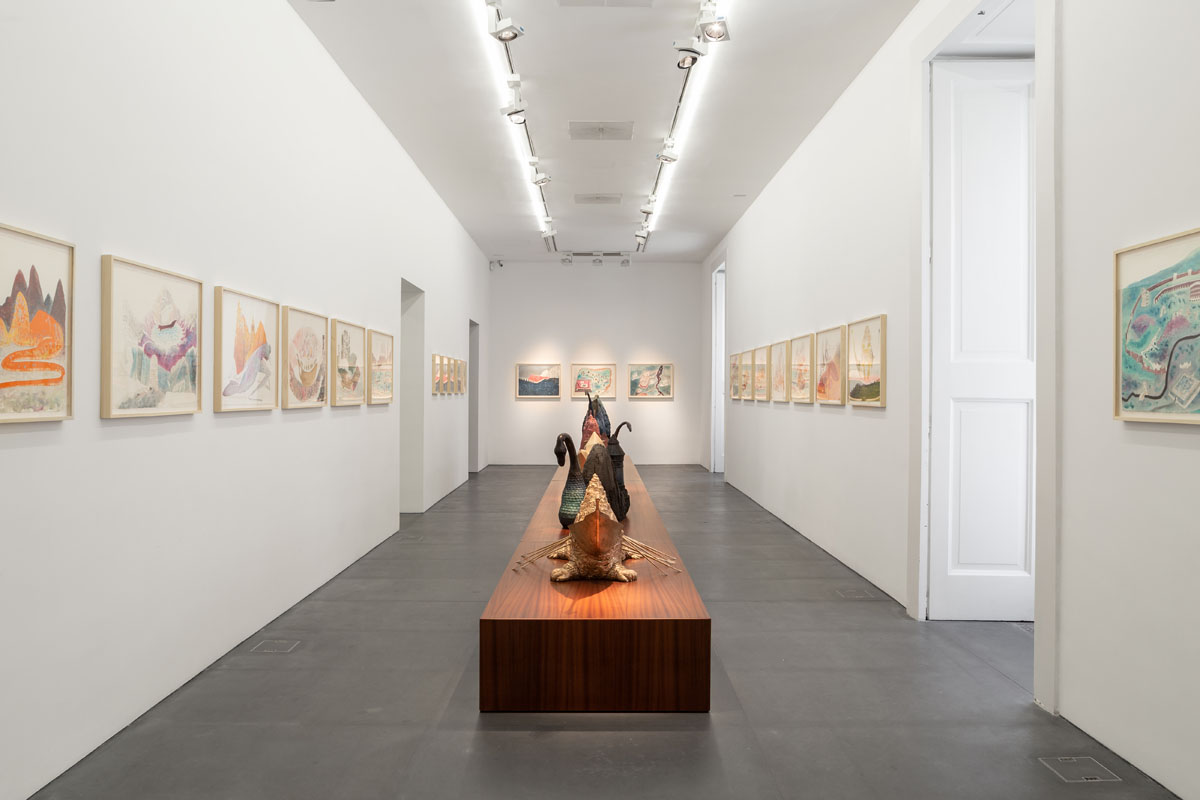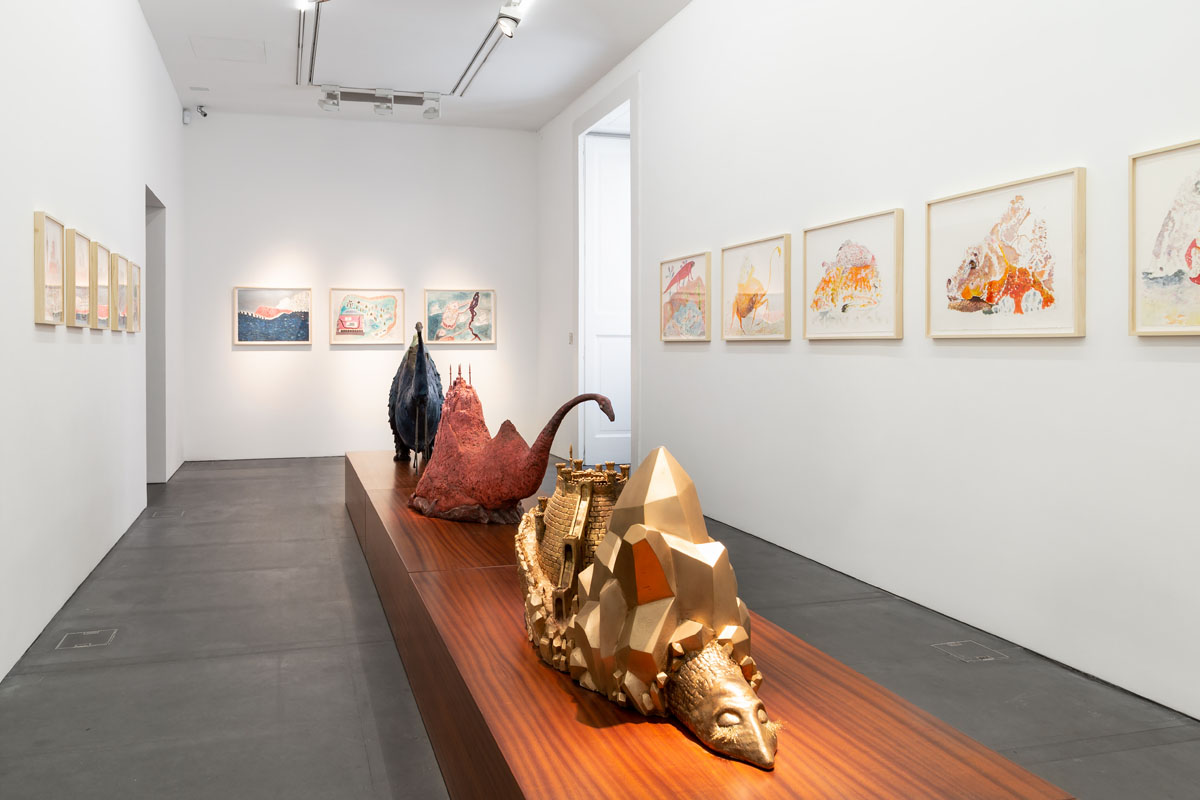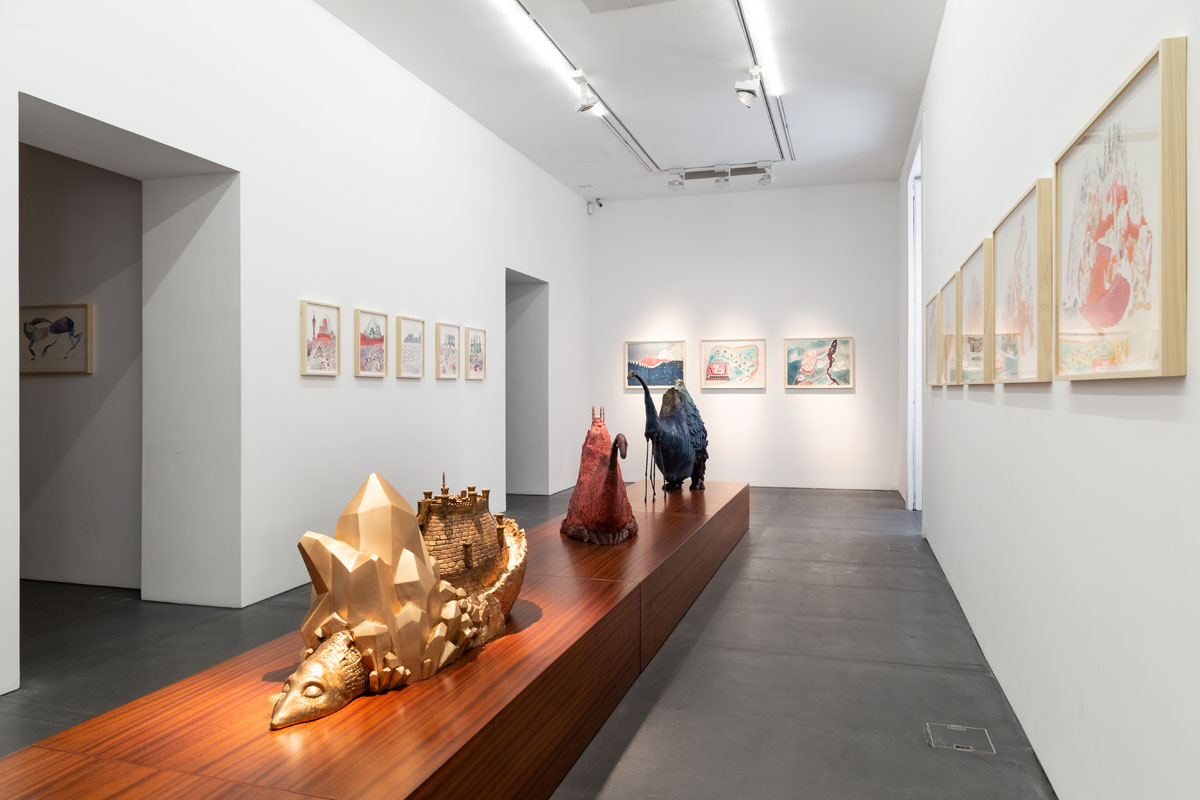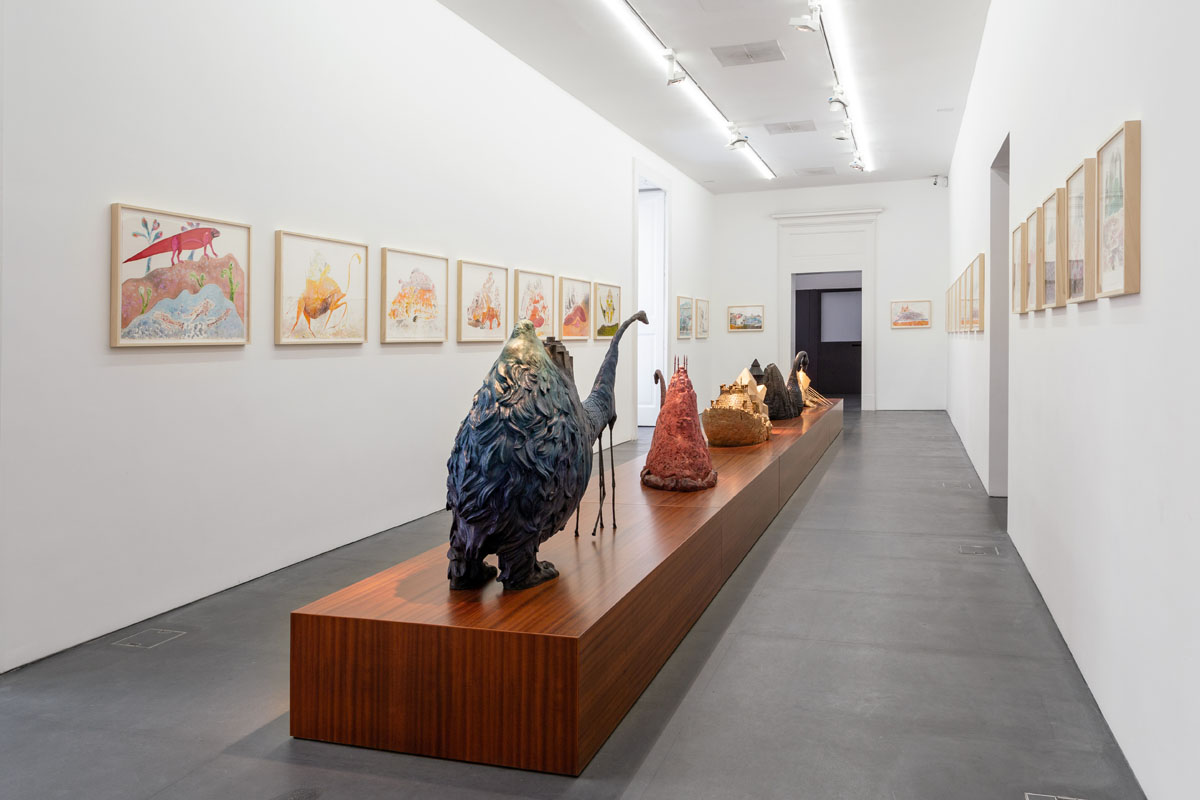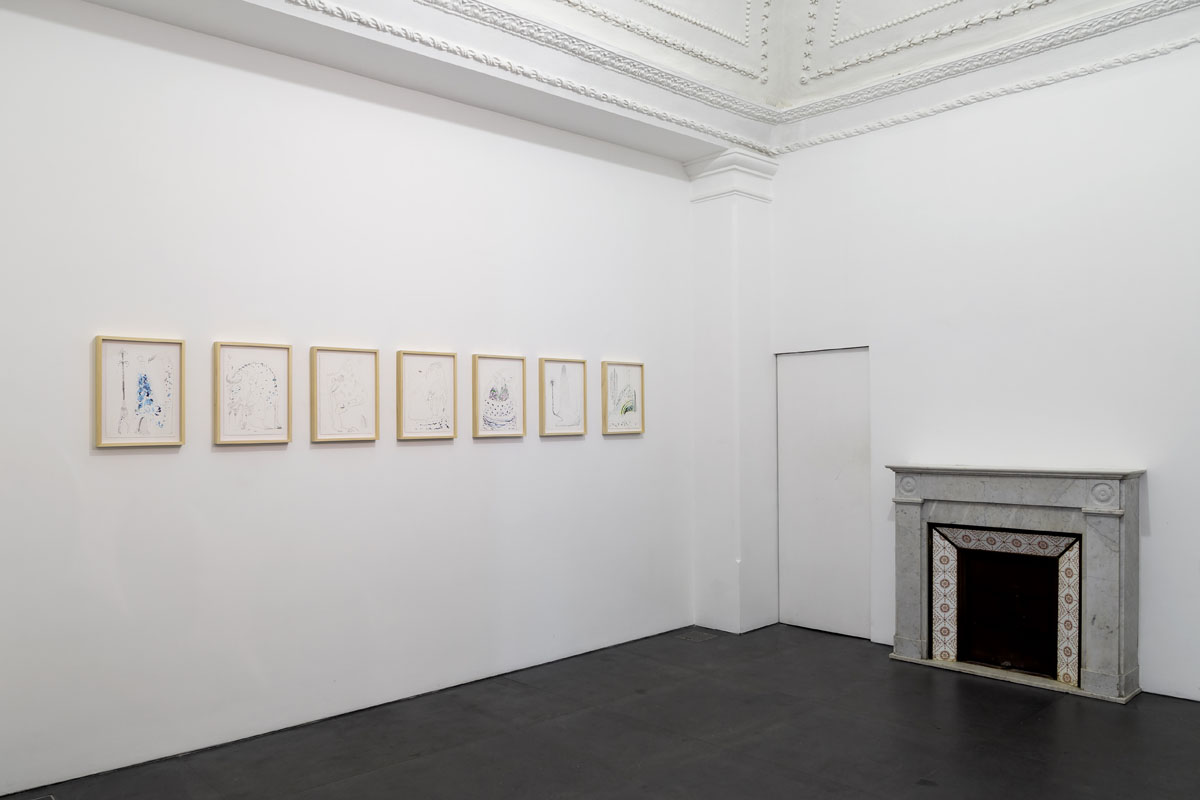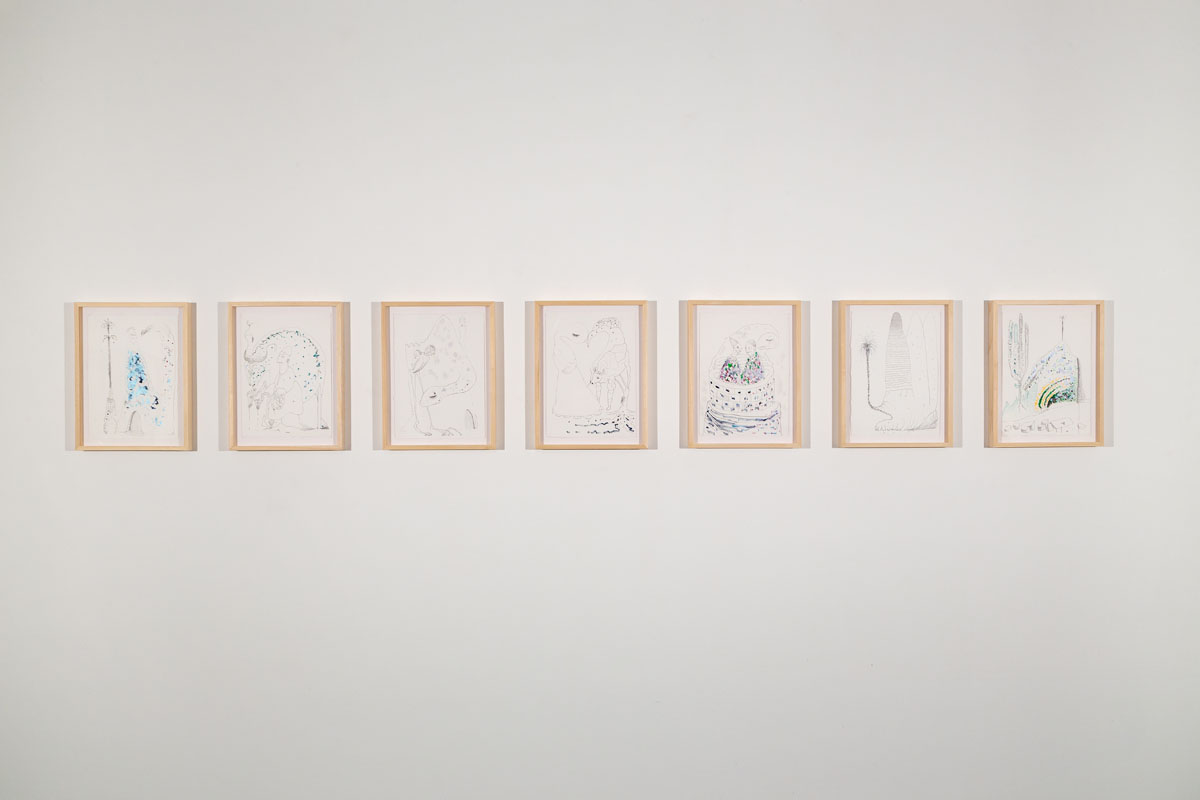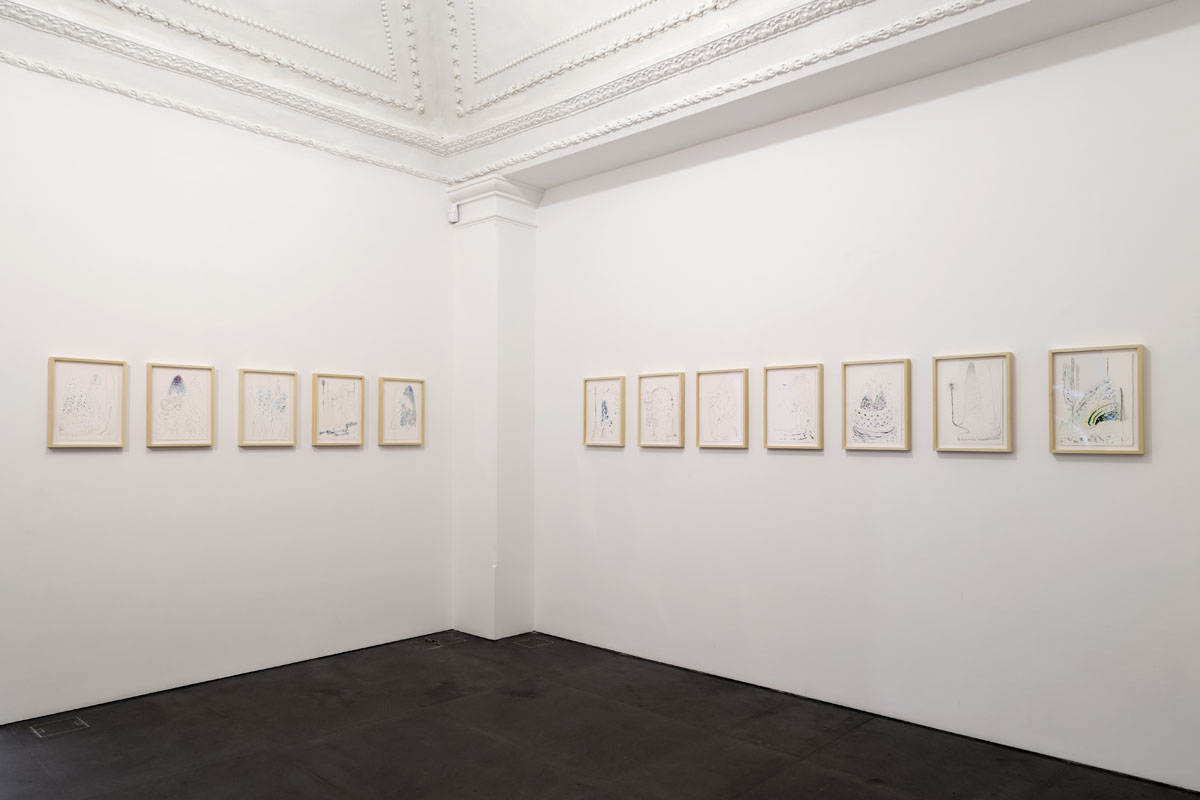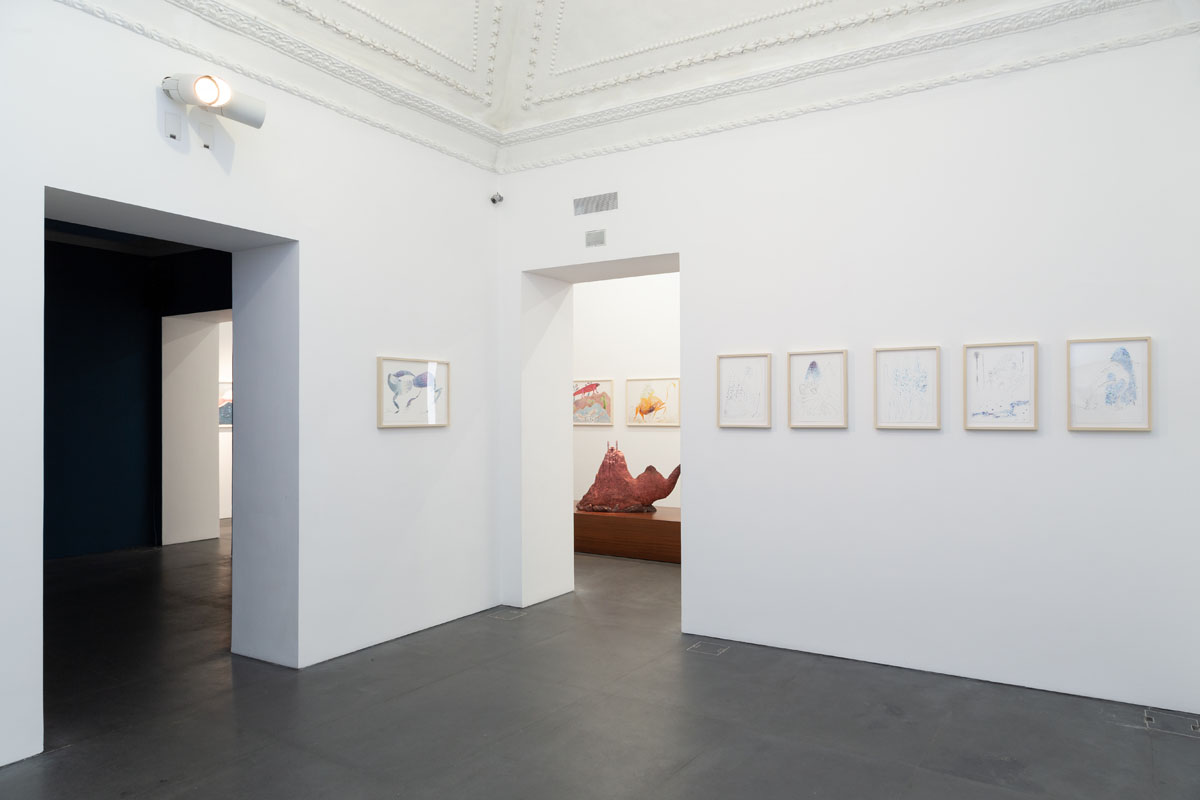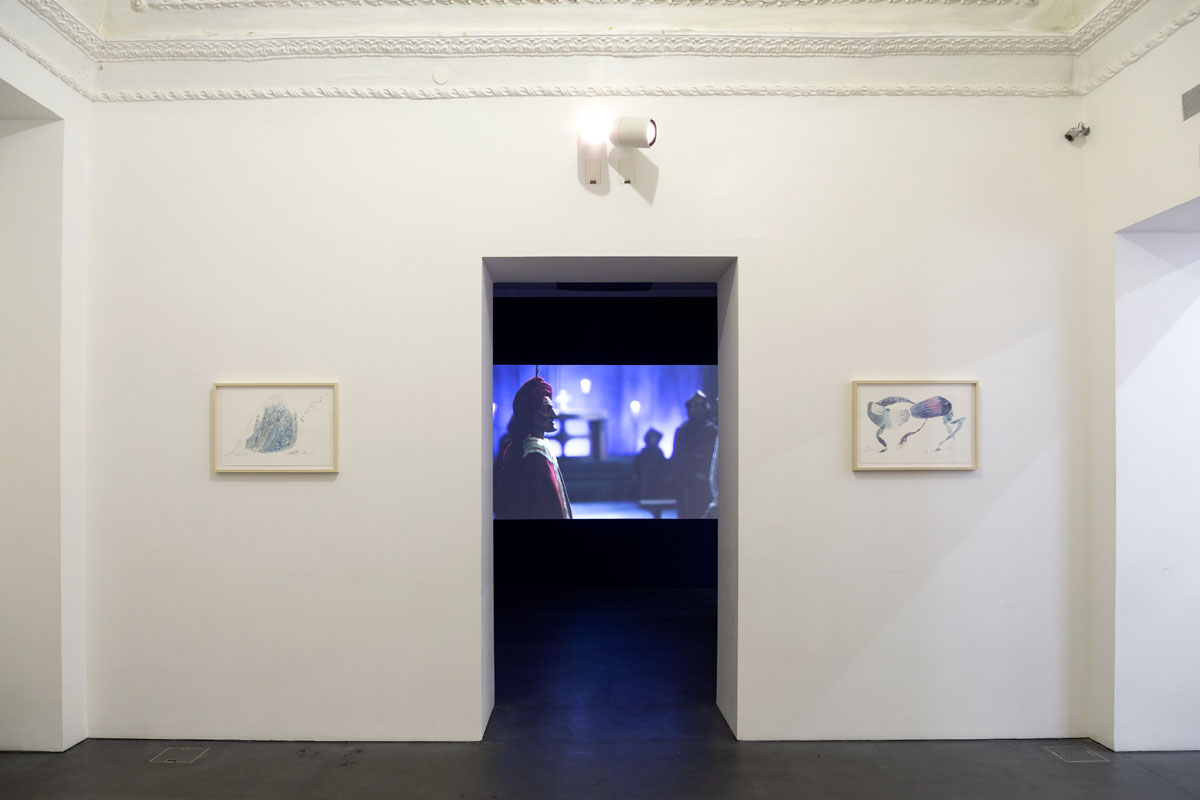Lia Rumma Gallery is pleased to present the first solo exhibition of the Egyptian artist Wael Shawky, opening on Thursday 28th June 2018, in the Gallery in Naples.
The work of Wael Shawky drew inspiration from researches and journeys taken by the artist in his native country, using the most diverse techniques and media: drawing, sculpture, but mainly film, performance and storytelling, are used by the artist to express a personal poetic which combines traditional elements with contemporary Arab culture. With an eye on today's events, the artist reinterprets the cultural, religious and artistic features of Middle Eastern history, creating third-party realities that live and thrive in an imaginary world.
For the exhibition in Naples, Shawky presents for the first time a new series of bronze sculptures, depicting poliform beings, with an unusual and elaborate physiognomy, exhibited in the first room. Those mythical creatures are ancient or prehistoric presences, with animal features, that change and transform themselves into fortified cities, into fortresses on top of harsh slopes, but also into small isolated villages or ships out in imaginary oceans. Those fairy-tale figures seem to recall iconographically, both aspects of the Arab culture, references to the European medieval civilization, and creatures conceived by the fantasy of Surrealist artists.
On the walls of the same room are exposed drawings, made of fine and clean strokes, that lead us back to the same imaginary animated by the creatures represented in the bronze sculptures.
As Shawky states in conversation with Carolyn Christov-Bakargiev, curator of the personal exhibition dedicated to him at Castello di Rivoli in 2016: "Drawing is never something I can foresee. It can become an animal connected to a city, for example. What I want from the work is that in the end it is sufficiently precise in its details that one could no longer criticize the individual parts, because it seems to really exist, somewhere. The landscape, the shape is there, a four-legged animal".
The exhibition ends with the screening of Cabaret Crusades: The Horror Show Files (2010), the first film from the Cabaret Crusades trilogy, begun in 2010 and ended in 2015, in which Shawky reviews the Crusades events from the Arab culture point of view. The characters are puppets made of different materials such as wood, clay and glass, which in an extraordinary way are moved to interpret a never predictable and exciting tale. The The Horror Show Files tells the story of the first Crusades, from 1096 to 1099, and for this specific film the artist uses ancient puppets from the Lupi Collection in Turin. This work was also presented at the MoMA PS1 in New York in 2015, along with the complete trilogy, in a solo exhibition dedicated to the artist.
